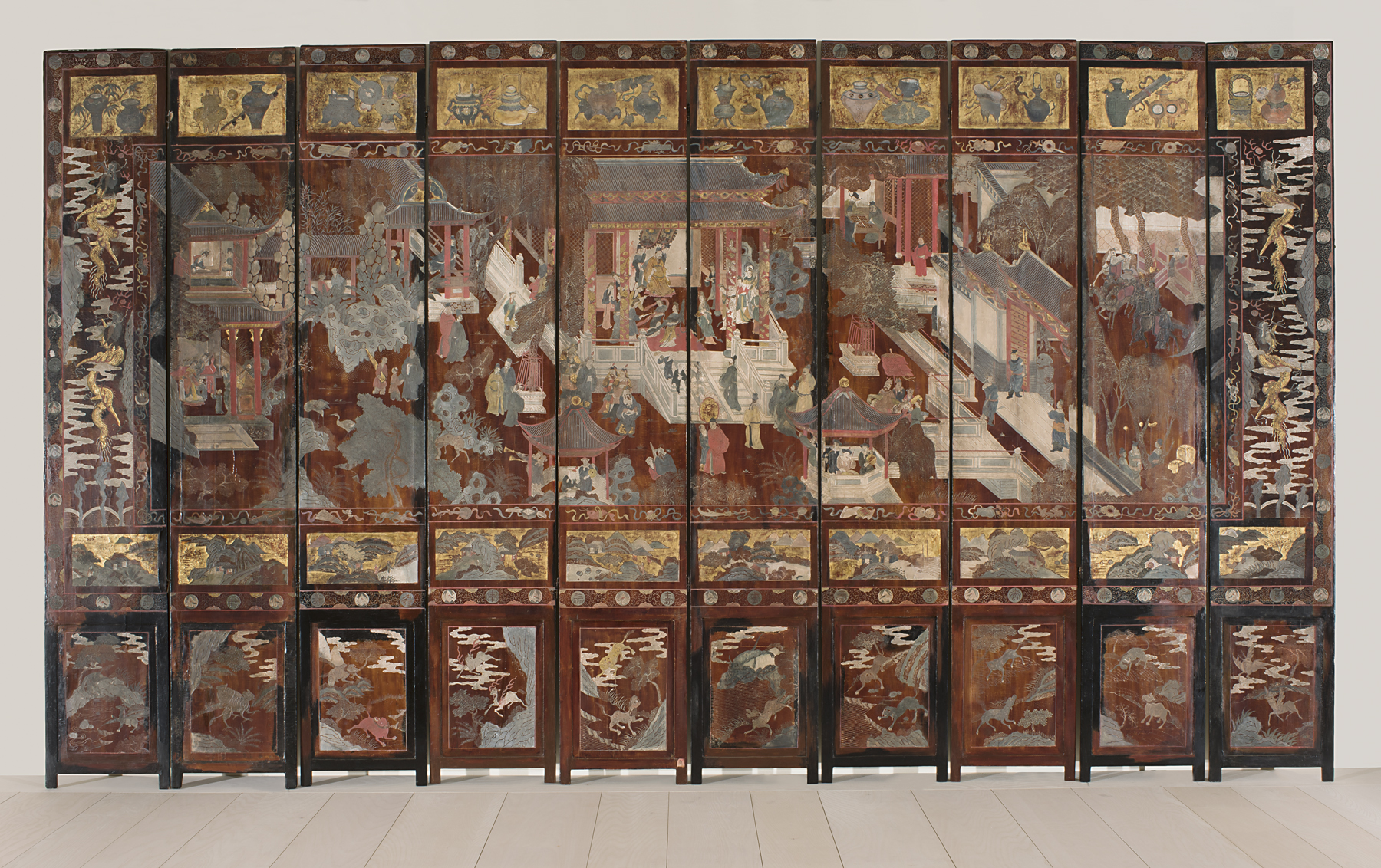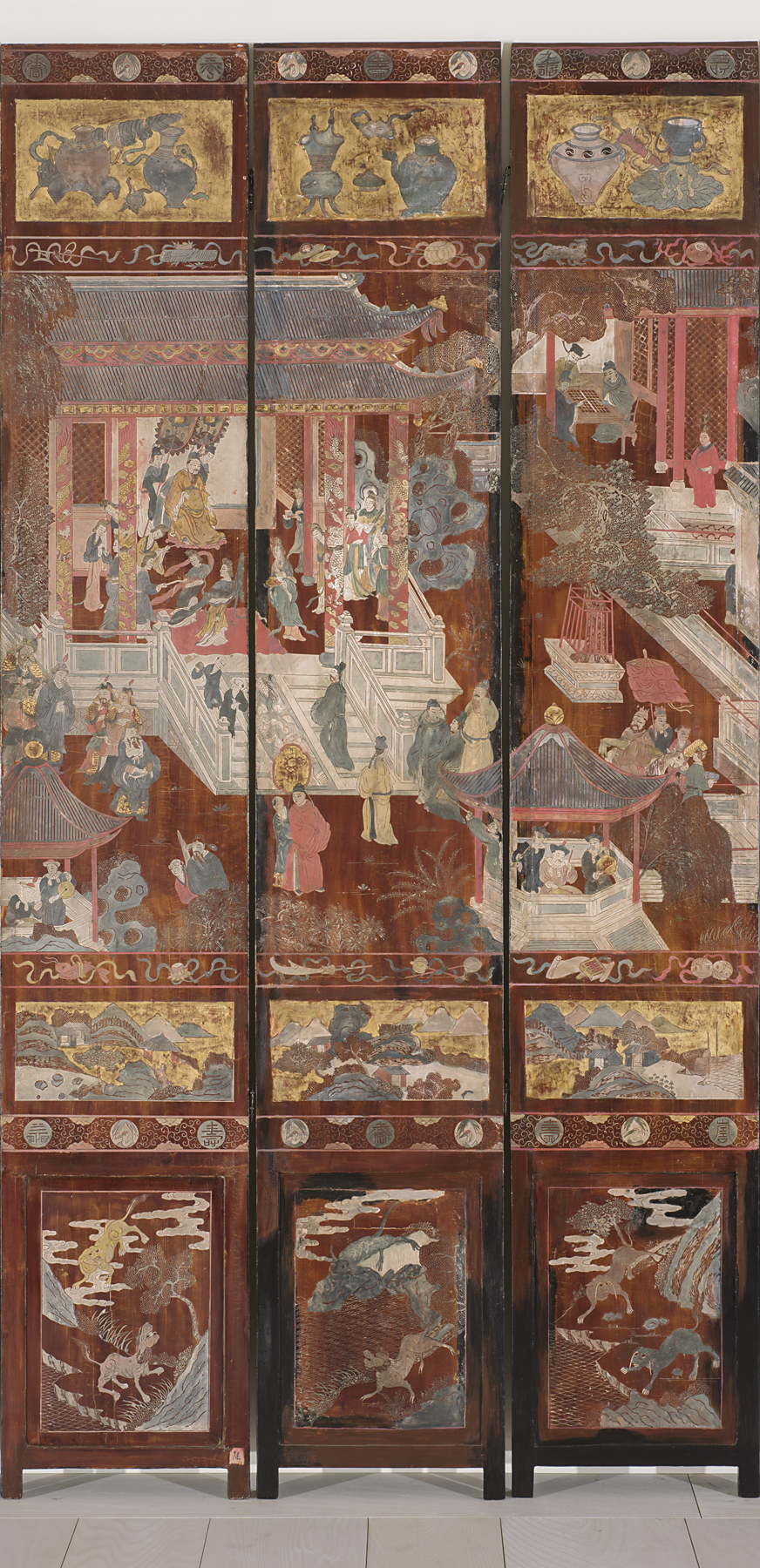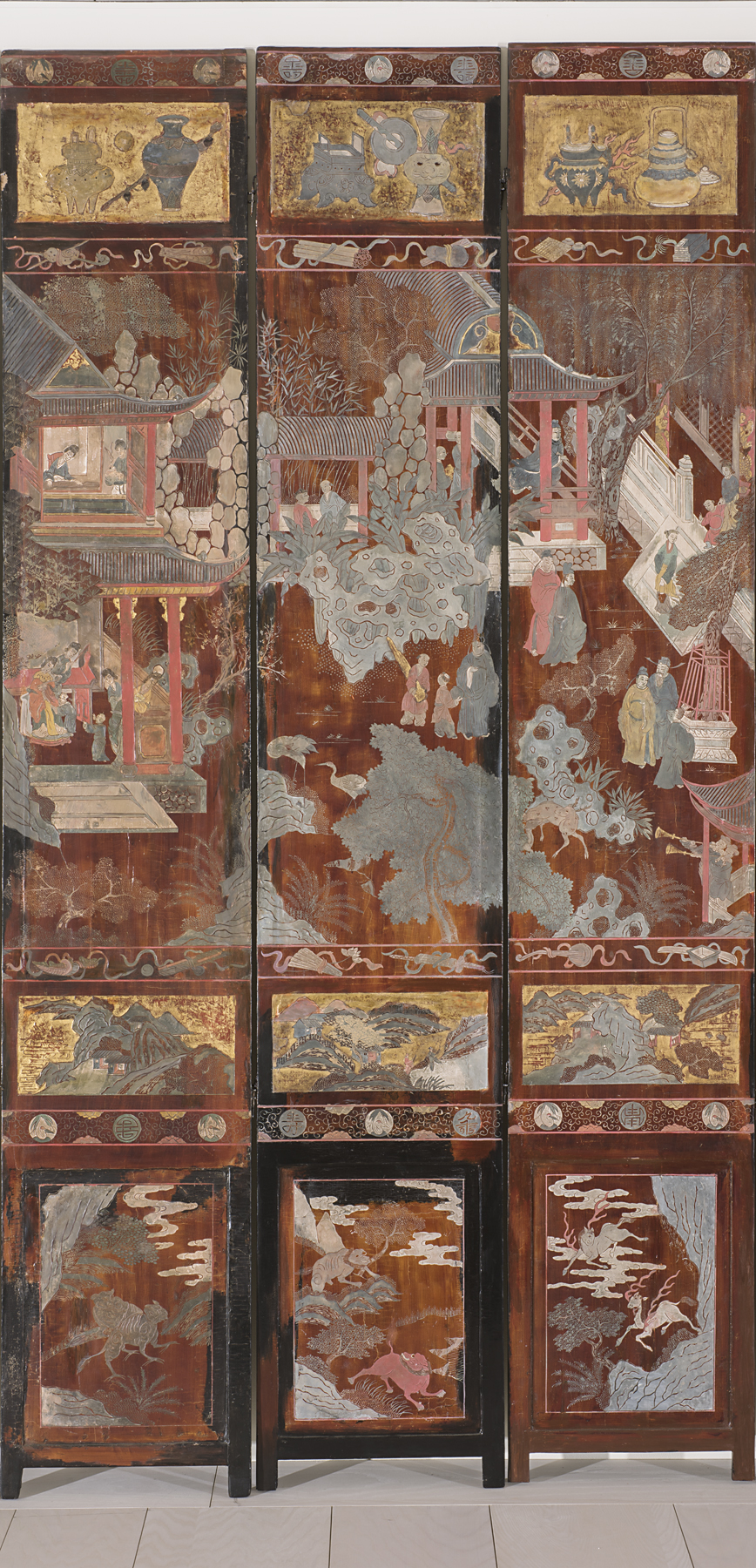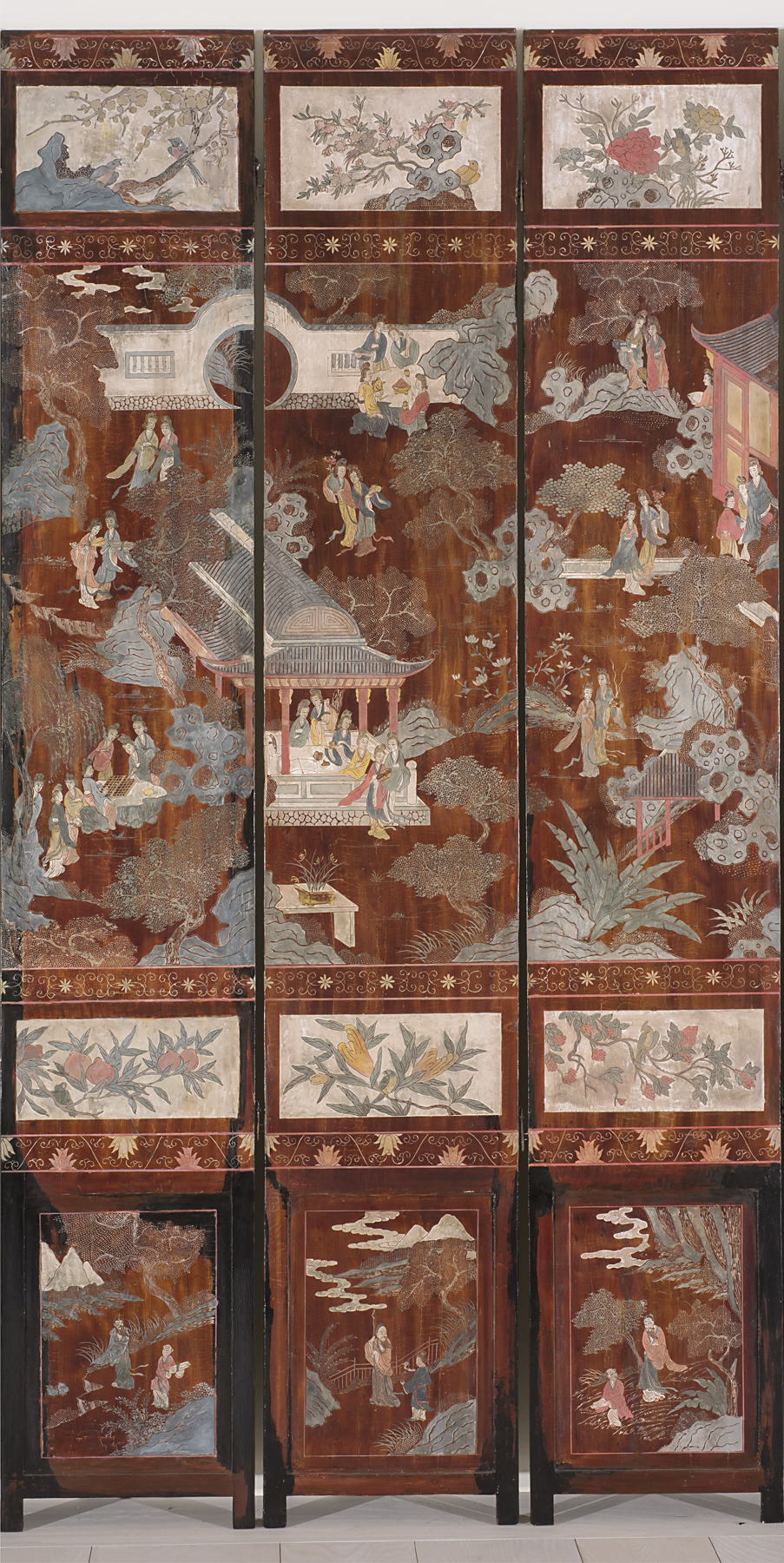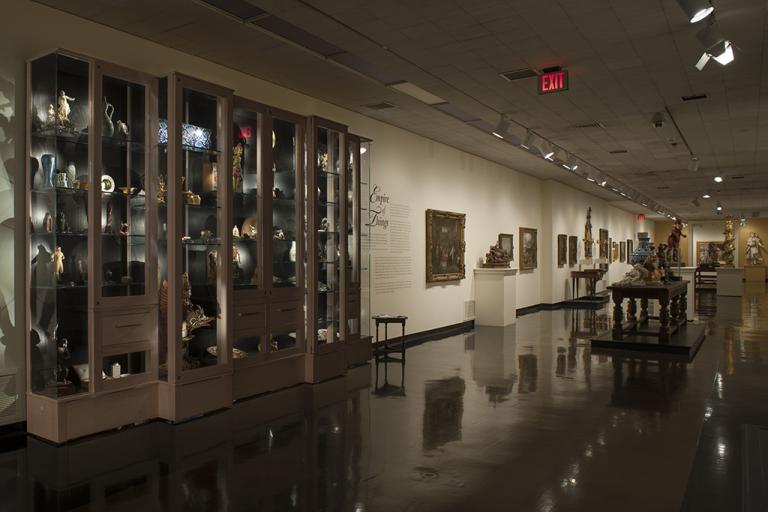ten-panel Coromandel screen, unknown maker from China
Artwork Overview
ten-panel Coromandel screen
, 1800s, Qing dynasty, 1644–1911
Where object was made: China
Material/technique: lacquer; wood
Dimensions:
Object Height/Width (Height x Width): each panel 284.5 x 48.3 cm
Object Height/Width (Height x Width): 112 x 19 in
Object Height/Width (Height x Width): each panel 284.5 x 48.3 cm
Object Height/Width (Height x Width): 112 x 19 in
Credit line: Gift of Mr. and Mrs. Charles (Buddy) Rogers
Accession number: 1977.0097
Not on display
If you wish to reproduce this image, please submit an image request
